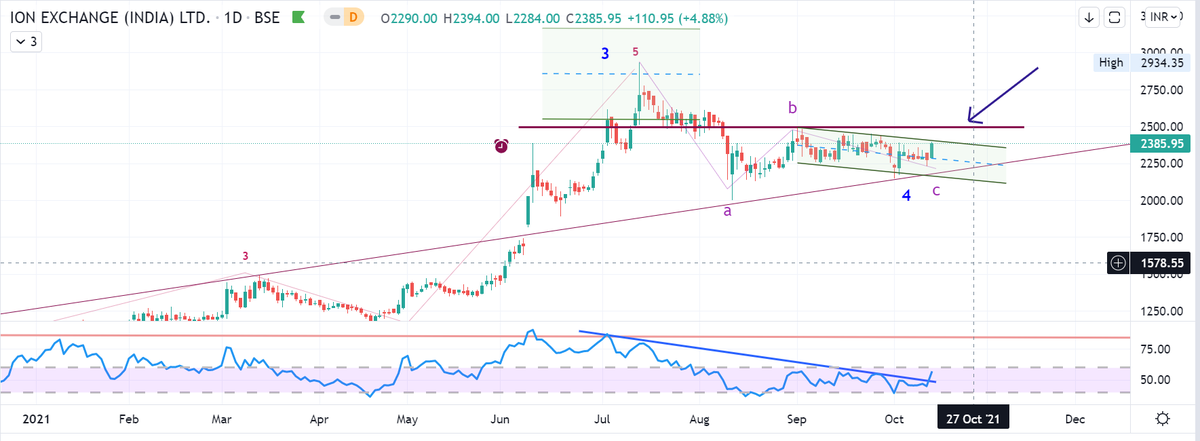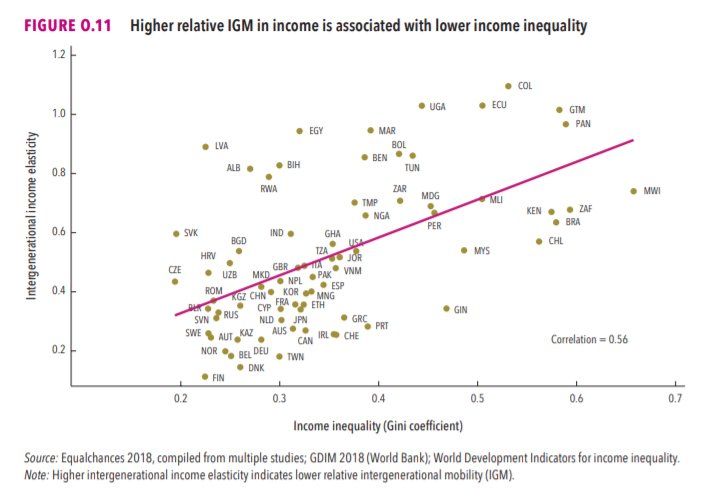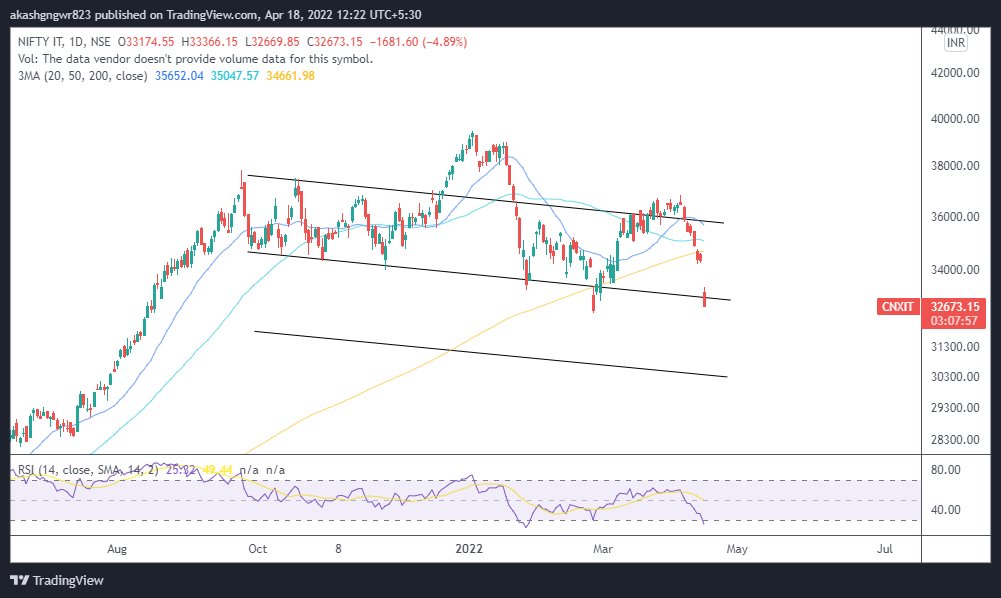Nifty IT - Once it is out of correction/consolidation then there is a due for 20 to 30% rally.
Use the correction to accumulate good companies
Cheers

More from Moneyspinners - Work Hard Dream Big!!
KPIT - Stay cautious, I'm not sure any surprise is in store!!
I love this company biz, would accumulate at lower levels
cheers https://t.co/02SWIrNcay

I love this company biz, would accumulate at lower levels
cheers https://t.co/02SWIrNcay

KPIT - Major wave 2 is in progress, will hold it with stop loss 555!!
— Moneyspinners - Work Hard, Dream Big!! (@Jai0409) April 15, 2022
cheers https://t.co/VykwxWxLpb
Ion exchange - A doubler from here!!
Updated chart https://t.co/SM8YHrxKLF

Updated chart https://t.co/SM8YHrxKLF

Ion exchange - A super quality small-cap
— Moneyspinners-Work 4UR Dreams (@Jai0409) August 18, 2021
In the recent correction touched 20DMA, looks like it's the bottom. It is in wave 4 correction but whenever it resumes then it's gonna doubler
Rumour - Dupont takeover talk
Cheers
Ion Exchange - to be in the watchlist, once it crosses the resistance line than the journey towards 4K will start
Updated chart
Cheers https://t.co/tJZWZZp0SE

Updated chart
Cheers https://t.co/tJZWZZp0SE

Ion exchange - A doubler from here!!
— Moneyspinners-Work 4UR Dreams (@Jai0409) August 27, 2021
Updated chart https://t.co/SM8YHrxKLF pic.twitter.com/8zY27prmCY
More from Cnxit
You May Also Like
https://t.co/6cRR2B3jBE
Viruses and other pathogens are often studied as stand-alone entities, despite that, in nature, they mostly live in multispecies associations called biofilms—both externally and within the host.
https://t.co/FBfXhUrH5d

Microorganisms in biofilms are enclosed by an extracellular matrix that confers protection and improves survival. Previous studies have shown that viruses can secondarily colonize preexisting biofilms, and viral biofilms have also been described.

...we raise the perspective that CoVs can persistently infect bats due to their association with biofilm structures. This phenomenon potentially provides an optimal environment for nonpathogenic & well-adapted viruses to interact with the host, as well as for viral recombination.

Biofilms can also enhance virion viability in extracellular environments, such as on fomites and in aquatic sediments, allowing viral persistence and dissemination.

Viruses and other pathogens are often studied as stand-alone entities, despite that, in nature, they mostly live in multispecies associations called biofilms—both externally and within the host.
https://t.co/FBfXhUrH5d

Microorganisms in biofilms are enclosed by an extracellular matrix that confers protection and improves survival. Previous studies have shown that viruses can secondarily colonize preexisting biofilms, and viral biofilms have also been described.

...we raise the perspective that CoVs can persistently infect bats due to their association with biofilm structures. This phenomenon potentially provides an optimal environment for nonpathogenic & well-adapted viruses to interact with the host, as well as for viral recombination.

Biofilms can also enhance virion viability in extracellular environments, such as on fomites and in aquatic sediments, allowing viral persistence and dissemination.

1/OK, data mystery time.
This New York Times feature shows China with a Gini Index of less than 30, which would make it more equal than Canada, France, or the Netherlands. https://t.co/g3Sv6DZTDE
That's weird. Income inequality in China is legendary.
Let's check this number.
2/The New York Times cites the World Bank's recent report, "Fair Progress? Economic Mobility across Generations Around the World".
The report is available here:
3/The World Bank report has a graph in which it appears to show the same value for China's Gini - under 0.3.
The graph cites the World Development Indicators as its source for the income inequality data.

4/The World Development Indicators are available at the World Bank's website.
Here's the Gini index: https://t.co/MvylQzpX6A
It looks as if the latest estimate for China's Gini is 42.2.
That estimate is from 2012.
5/A Gini of 42.2 would put China in the same neighborhood as the U.S., whose Gini was estimated at 41 in 2013.
I can't find the <30 number anywhere. The only other estimate in the tables for China is from 2008, when it was estimated at 42.8.
This New York Times feature shows China with a Gini Index of less than 30, which would make it more equal than Canada, France, or the Netherlands. https://t.co/g3Sv6DZTDE
That's weird. Income inequality in China is legendary.
Let's check this number.
2/The New York Times cites the World Bank's recent report, "Fair Progress? Economic Mobility across Generations Around the World".
The report is available here:
3/The World Bank report has a graph in which it appears to show the same value for China's Gini - under 0.3.
The graph cites the World Development Indicators as its source for the income inequality data.

4/The World Development Indicators are available at the World Bank's website.
Here's the Gini index: https://t.co/MvylQzpX6A
It looks as if the latest estimate for China's Gini is 42.2.
That estimate is from 2012.
5/A Gini of 42.2 would put China in the same neighborhood as the U.S., whose Gini was estimated at 41 in 2013.
I can't find the <30 number anywhere. The only other estimate in the tables for China is from 2008, when it was estimated at 42.8.

























